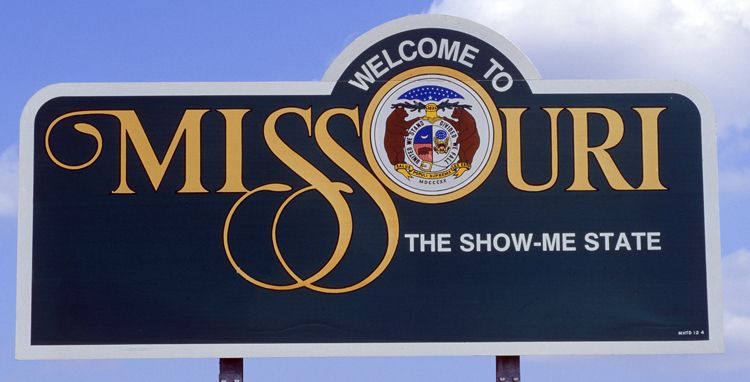Tellin’ ain’t Sellin’ – Every Customer is From Missouri, So Show Them Something!

When your salespeople call on customers, what are they pitching? What do they present when they get that rare opportunity to show a high-profile prospect the benefit of working with your company? While I have not been in the room often when a commercial service contractor is pitching a customer, I have seen hundreds of websites for these companies, and I have been to lots of trade shows where they are exhibiting. Generally, I am not impressed by what I have reviewed. Mostly I see some version of one or more of the following themes:
We Work Harder! It sucks to work harder than the other guy.
We Care More! Not certain what sucks more – working harder or caring more.
Better Technicians Means Better Service! This is the Papa John’s pizza pitch. You’ve seen examples here, here, and here of how that’s not working.
We’re a Family Business! The mafia is a family business too.
We’ve Been in Business a Long Time! Really? Why are you still such a small company?
Sadly, the website content for most commercial service contractors is typically a long and rambling word salad that doesn’t add up to much value for the customer. Generally, Google is not impressed either as most rank pretty low for relevance in organic search results. I imagine the salespeople are equally unimpressed with the company strategy, so their pitch quickly devolves to price:
How much are you paying now? We’ll get the work done, and it will be cheaper! Let’s negotiate labor rates and a markup on parts! We will be there 24/7 when things go wrong! Call us anytime and we will fix your broken equipment by working around the clock until everything is good again!
Competing on price and some vague promises to work harder and care more and fix broken equipment 24/7 and be more family-oriented sucks. Why should the customer believe anything the sales rep is saying? How can your sales representative make an impression that moves the conversation to valuable outcomes instead of a mark-up on the cost of the labor and parts?
Of course the most important thing the salesperson can do is ask questions and understand the goals of the buyer through some discovery conversation. The other thing that should be offered is a premium program, but do not expect the customer to buy on the promises and platitudes of a sales rep. Tellin’ ain’t sellin! Your sales people should be able to show the customer the value of your brand by demonstrating how the program works. I am fond of declaring that all customers come from Missouri, which is known as the “show me” state. If you can’t show them the value, you will not sell them the program.
So what does a premium program look like? And how can you demonstrate it to the customer in a way that is meaningful to them? Let’s have a look at some examples from other industries to gain insights into components you should consider.
Amazon Prime – Amazon offers a subscription program called Prime, and nearly 70% of US households are Prime members. Prime members pay $119 per year in exchange for free two-day shipping, access to a library of movies, television shows, and music, and a free Kindle book every month, among other things. The most important thing Prime does, however, is put Amazon at the top of the heap when a subscriber considers how to buy the next bag of dog food, or supplies for their kitchen pantry, or Christmas gifts for their friends:
I’ve already paid for Prime, I might as well benefit from the free, expedited shipping!
The program helps keep the Amazon brand top of mind for future purchases, and customers pay for this marketing trick through their subscription fees! It’s brilliant marketing by Amazon. Amazon allows prospective customers to try Prime free for a month to experience its value because Amazon knows that all customers are from Missouri. The free trial “shows” the customer why Prime is valuable instead of just “telling” the customer that it will be great if they buy.
BMW Ultimate Care – BMW is a premium automotive brand that delivers what they claim is the “Ultimate Driving Machine,” and Ultimate Care is their premium maintenance program. You pay in advance, typically at time of purchase when financing is also a part of the conversation. Ultimate Care provides unlimited service consistent with the manufacturer’s recommended service plan. All parts and service required for recommended maintenance are included at a thirty-percent discount. The program is only available at BMW dealership locations, so you will be bringing the car to the dealership and wandering about reviewing all of the latest offerings of BMW as your maintenance plan is delivered.
Once again, brilliant marketing. You pay in advance so that you will certainly use the service that requires you to come to the dealership on a regular basis. No doubt you will get a loaner for the latest model at the upper end of your price range for any extended service requirements. The dealership is having the customer pay fees in advance of service to help them deliver a hassle-free experience and market their latest offerings to the customer on a regular basis.
Brandt STORM – Brandt Engineering is one of the largest mechanical contractors in Texas, and STORM is their premium program. STORM stands for Service, Technology, Optimization, Retro-commissioning, and Monitoring. When the customer buys into the STORM program, Brandt does a top-to-bottom review of the equipment while installing monitoring technology to track key performance data on the critical elements where failure results in expensive disruptions. Once they and the customer agree the equipment condition is worthy of a performance promise, STORM is initiated. The customer receives regular communication and attention from Brandt engineers and technicians while simultaneously benefiting from lower rates on service requirements and ideally lower utility costs.
The customer is paying Brandt the money they are saving on utility bills and breakdowns as subscription fees in order for Brandt to continuously remind them of the value of the Brandt brand! That trade-off is certainly worth the risk to Brandt of a failure where Brandt must pay the premium (expedited parts, overtime labor, etc.) for recovery instead of the customer paying it. These risks are minimized through information, and the customer is conditioned that any retro-commissioning recommendations (quotes for new equipment) based upon the data are in their best interest to avoid performance disruptions that fall outside the STORM promise. It is brilliant.
So what are the lessons you should take from these examples?
1 – Brand the Program. What is your version of Amazon Prime? Ideally the name helps the sales rep to tell the story, to get the conversation going with the customer, and then the customer remembers your brand. A good name demonstrates your company’s thoughtfulness in how you communicate your value.
2 – Show, Don’t Tell. Your sales people need to be prepared to give a demonstration of the program. Amazon gives prospective Prime members a month of free Prime membership to try out all of the benefits. Do your sales people have a way to easily give the customer your branded program experience?
3 – Promote the Features. Can you enumerate the features of the program? In a list? Spend some time thinking about the names of the features.
4 – Get Paid for Nothing. If the only time you send a customer an invoice is when you have a labor or parts line item to bill, guess what? They are going to assume your value is in the labor and parts instead of the program. The fewer invoices you send to the customer, the better. Ideally, have them pay annually in advance. It’s better for you and cheaper for them.
5 – Offer a Good Contract. Put in place a master service agreement, a rate schedule, and a service level agreement. Good fences make good neighbors and good contracts make good customers.
None of these elements of a premium program are rocket science, but it is surprising to me how rarely they are implemented by service contractors. Do not let shoddy practices in your industry nor weak competitors that always sell on price dictate your business model. The executive management of your company should spend at least fifty percent of their time working on program and marketing innovations that set the brand apart from competitors. Innovation rarely happens by accident, and it is the key to having a differentiated value proposition.
